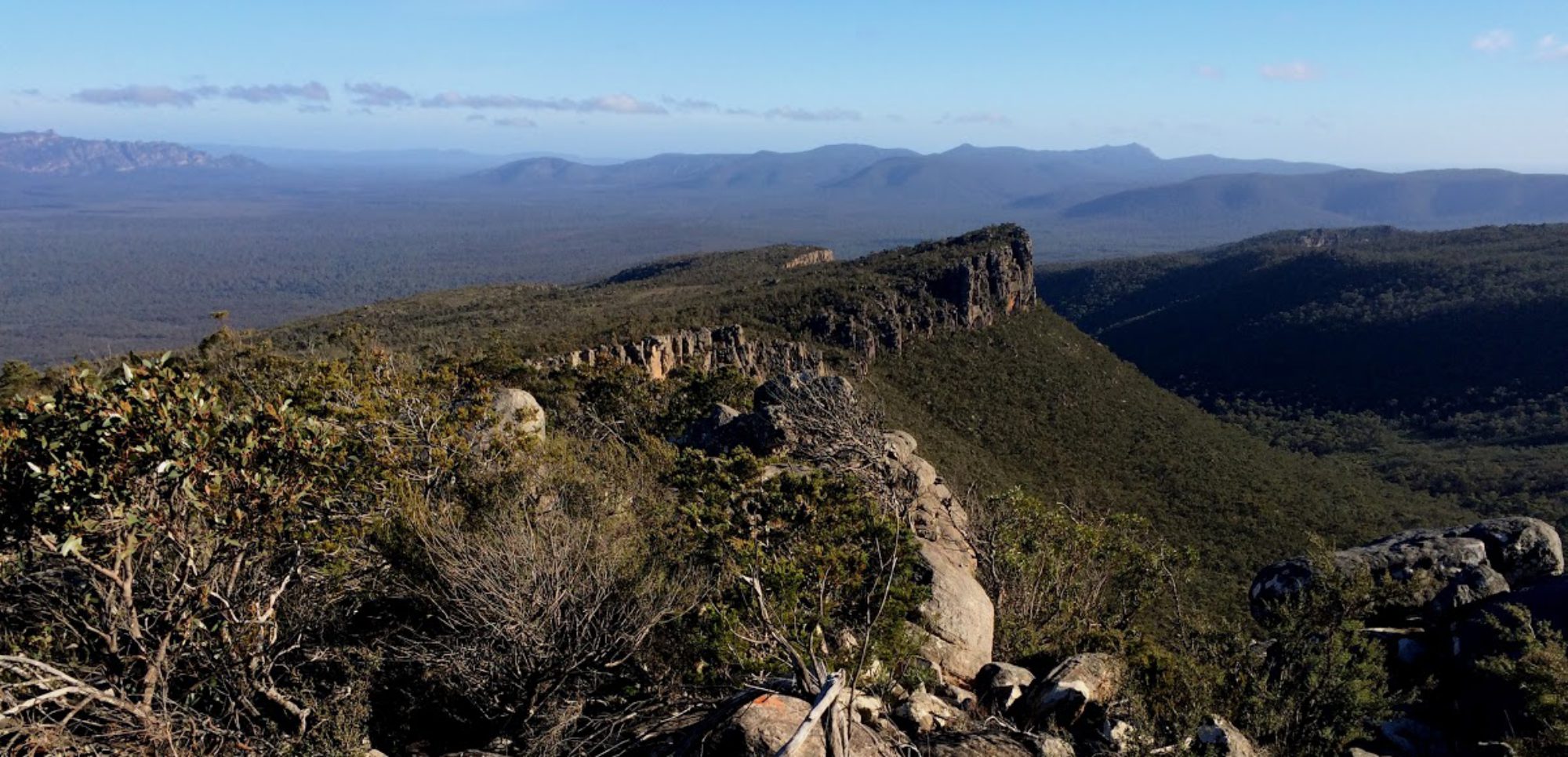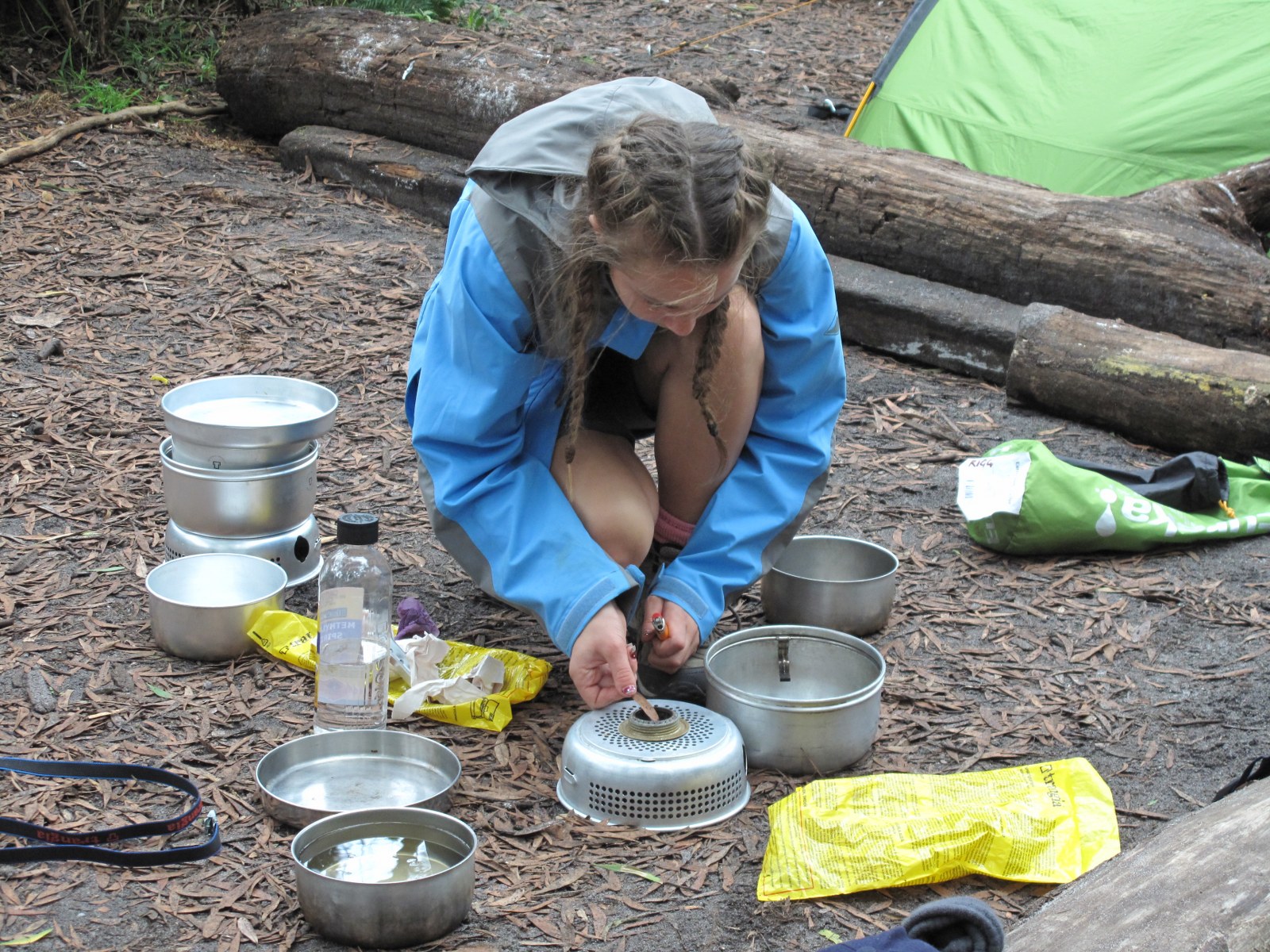Reading Time: 4 minutes
First use of new stove
Before taking a new stove on a trip, become familiar with its operation at home. Each type and model of stove is different.
- Read the manufacturer’s instructions, and make a copy to take on the trip.
- In an outside location:
- Assemble the stove.
- Fuel the stove or connect the fuel bottle or canister. Check all connections.
- Prime and light the stove according to the instructions..
- Test cooking on the stove with the billies planned to be used and check its stability.
Always
- Set up the stove on clear, level ground with all non-essential items put away, especially anything that could burn or melt.
- Ensure highly flammable tent fabric is well away and secured to prevent it flapping or blowing against the stove if cooking near the tent.
- When tentbound, light the stove completely outside and cook with the stove just outside the vestibule or entrance.
- Ensure there is adequate ventilation.
- Keep billy handles out of the flame to avoid burns when picking them up.
- In a hut use specific cooking areas.
- Refuel a stove outside the tent or a hut as spilt fuel may not be noticed.
- Keep movements near a lit stove to a minimum.
- Keep children well away from lit stoves and liquid fuel bottles.
- Keep unused fuel in a cool place out of direct sunlight.
- Keep fuel bottles separate from water bottles.
Never
- Stoop or bend over a stove while lighting it.
- Leave a lit stove unattended.
- Use a stove in a poorly ventilated space, e.g. in a tent with doors closed or a snow cave or igloo. Carbon monoxide is a deadly poisonous, colourless and odourless gas and therefore dangerous. Ensure there is adequate ventilation.
- Refuel a stove near any flame, e.g. another lit stove, candle or campfire.
Gas stove
- Never enclose the gas canister in a windshield as the buildup of heat in the enclosed air space will cause a dangerous increase in temperature that could result in an explosion.
- Screw canisters on to the burner very carefully, up to a snug fit. Do not overtighten as this may damage the stove.
Liquid fuel stove
- Before refilling, ensure the stove is turned off, the flame is out and it has cooled down.
- Only refill the stove in the open; outside huts and away from tents, food.
- Do not refuel anywhere near other stoves or flames e.g. candles.
- Recap the fuel bottle and put it well to the side before relighting the stove.
- Ensure that O-ring seals are in good condition and carry a spare.
Fuel spills
- If a spill occurs during refueling wait for the fuel to evaporate before continuing.
- If a spill occurs while the stove is lit, step back and let the fuel burn up or extinguish the flames by smothering them with a billy, earth or snow.
Pressurised liquid fuel stove
A pressurised liquid fuel stove has additional factors to consider depending on the model:
- Do not over-pressurise. Pump only the specified number of strokes.
- Always use the heat shield if one is designed for the stove and ensure it is fitted correctly.
- A blowout (see below) may occur in stoves that have a safety value. Ensure the safety valve is facing towards a clear area away from the user, other people and tents.
- On stoves with valve handles and keys, take care as they often get hot. If possible, remove the key from the spindle after adjusting the flame to avoid burning fingers when operating it.
- If a stove is designed to operate with a flame spreader, ensure it is in position on top of the burner directly above the jet before it is lit, otherwise flaming fuel could shoot high up into the air.
For stoves with a pump in the fuel bottle:
- Ensure the pump mechanism is correctly screwed into the bottle. Over tightening may damage the seal.
- Never loosen or unscrew the bottle connection when the stove is in use.
- If the pump is left in the fuel bottle take care to avoid fuel leaks.
For stoves with an integrated tank:
- Ensure that the fuel tank cap is screwed down firmly, but do not overtighten.
- Never unscrew the cap while the stove is lit, very hot or has glowing embers of carbon on the flame spreader.
Care when priming a stove
- Incorrect priming of the stove can cause a dangerous flare up.
- Some people use a less volatile primer e.g. methylated spirits.
- Only use sufficient primer to light the stove – too much primer causes a flare up.
- Avoid turning on the stove fuel supply before the stove burner is adequately heated – this can also cause a flare up.
Blowout emergency action
Some pressure stoves are fitted with a safety valve built into the filler cap. If the valve releases, the escaping fuel is likely to ignite, resulting in a dangerous jet of flame which can be up to a metre long. If this happens, it means dealing with a hot stove ejecting flame from two sources: the burner and the safety valve.
- Immediately remove any pot from the stove.
- Turn off the valve and then blow out the flame from the safety valve (if safe to do so).
- If it is not possible to turn off the jet without injury, hold the stove to avoid burning and move it quickly to an open area, e.g. outside a hut, further away from the tent.
- Do not kick or throw the stove as it may land on another flammable object, such as a tent or a person!
- Extinguish the flames by smothering them with a billy or using earth or snow.
- If the flames are extinguished within a few minutes, the safety valve in the filler cap will be fit for reuse.
- A prolonged blowout may destroy the temper of the spring in the safety valve and it may need replacing.

